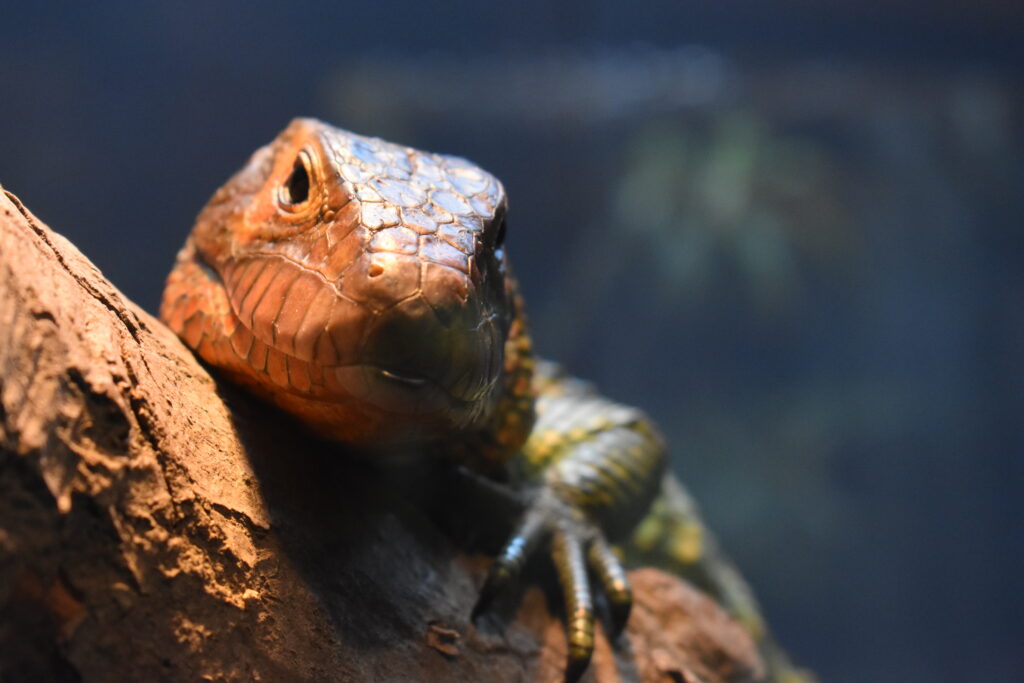You’re a Lizard, Caiman
Which reptile has up to a four foot long body with tail, loves being in the water and in the trees, has thick scales and the word Caiman in its name? It’s not a species of crocodile, it’s a species of lizard: the Caiman lizard!
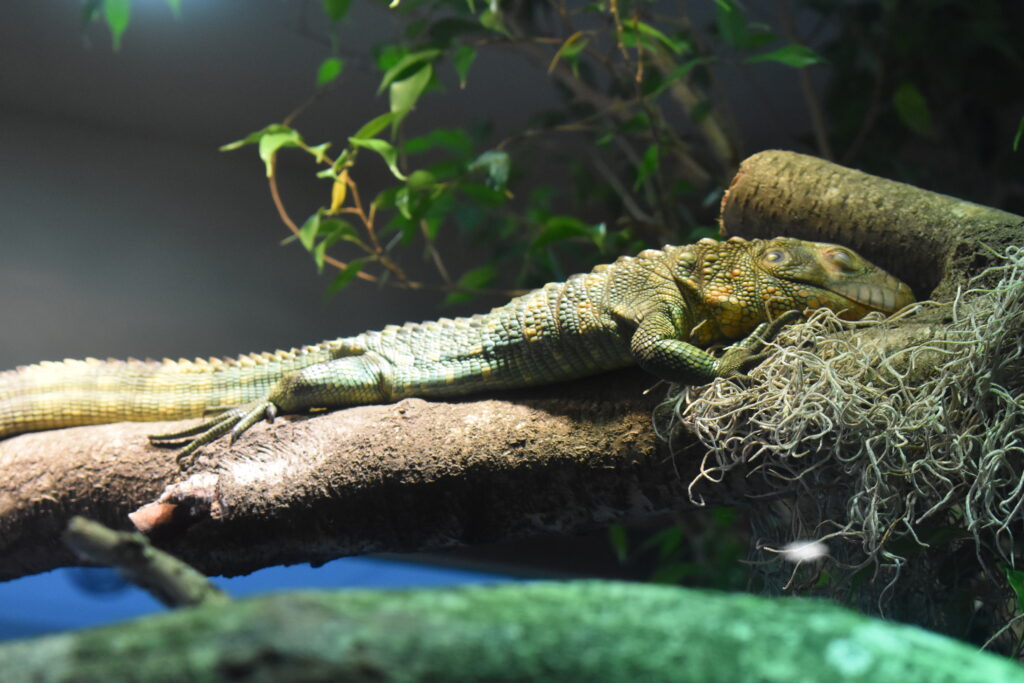
The Caiman lizard is a semi-aquatic species named for its large, heavy scales that resemble those of the Caiman crocodile. The lizard’s body is green and they often have a reddish-orange head. Caiman lizards live in swampy habitats or other flooded woodlands in South American countries such as Ecuador, Colombia, Brazil and Peru.
These lizards can be found basking on branches most of the time, but when threatened they drop to the water below to swim away from any potential predators including jaguars, snakes and crocodiles. Their ability to both climb and swim helps them avoid danger on both land and in water.
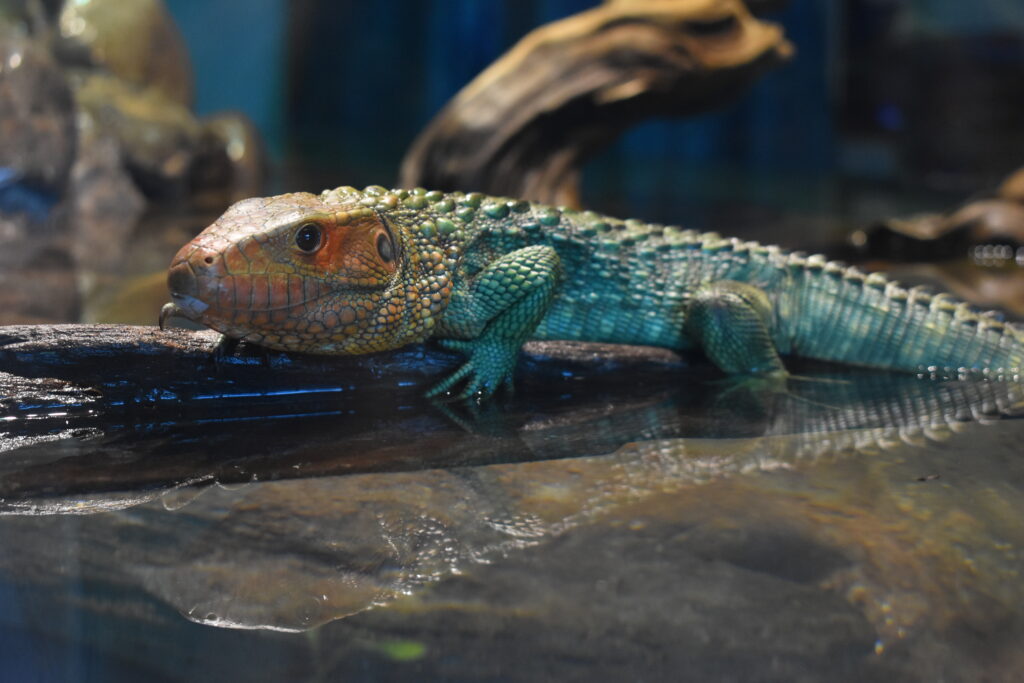
Caiman lizards are also predators, preying on invertebrates such as snails, clams and crayfish, as well as the occasional turtle. Their powerful jaws help crush their prey, then they spit the shells out while consuming the meat and softer parts of the animal. At the Virginia Zoo, our Caiman lizards seem to show little-to-no-interest in eating invertebrates, despite what their relatives in the wild eat. Instead, they are fed three times a week of a diet consisting of meatballs, smelt fish and they are occasionally offered mice.
The Virginia Zoo has a pair of two-year-old Caiman lizards who arrived at the Zoo on December 14, 2017 from the San Diego Zoo. Caiman lizards usually have some variation of a red-colored head, but can have more green scales on their head. At the Zoo, the lizard with the greener head is a female and the one with a more red head is a male.
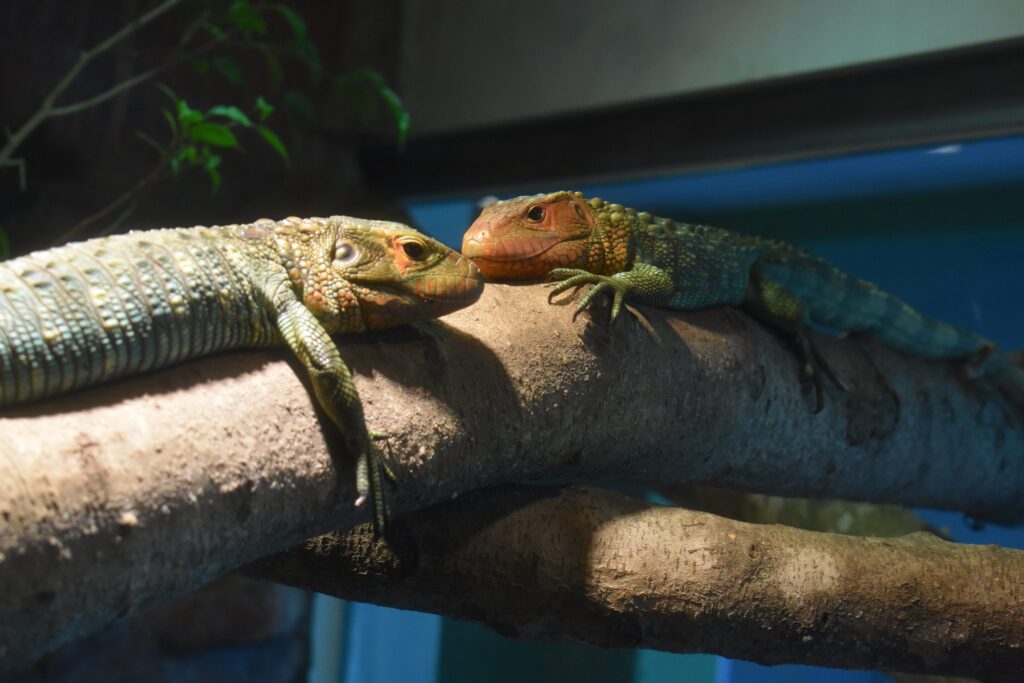
Of the two lizards at the Zoo, the female is more active. She is not shy around her Zoo Keepers and will eagerly inspect any new objects in the enclosure. She can often be found floating or swimming in the water. The male is more timid around Zoo Keepers, and often sits up high on branches under heat lamps while watching what Keepers are doing. He is most active when checking out a new piece of wood or branch that is added to the exhibit.
The female weighs slightly over two pounds and the male weighs one pound and eight ounces. They both measure around 31 inches long, or just more than two-and-a-half feet! Once they are fully grown, they can reach four feet in length and weigh up to 10 pounds.
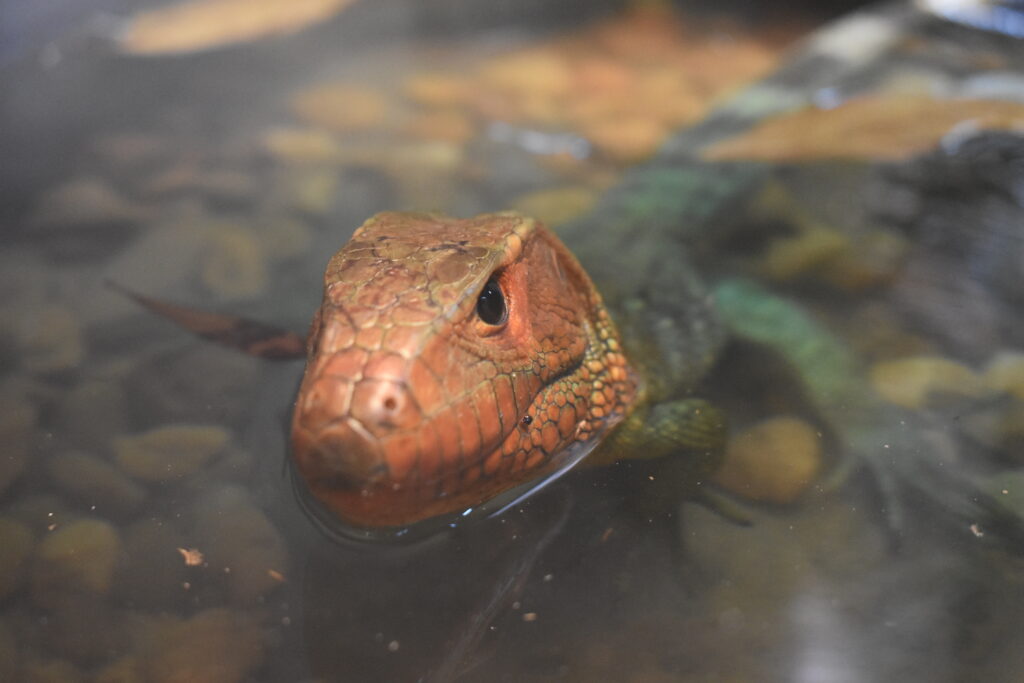
Both lizards are still growing and aren’t mature enough to breed with other individuals. More research needs to be conducted on the reproductive behaviors for this species, but the lizards typically lay a clutch of up to seven eggs, which hatch into independent lizards after a 179-day incubation period.
This species’ conservation threat level has not been evaluated, and their population numbers are stable despite threats from pollution, deforestation and habitat loss in some parts of its range, as well as occasional hunting for meat by locals. In the 1970s the species was hunted for its skin, which was used to make leather, but regulations were passed prohibiting the harvest or sale of their skin.
The siblings at the Virginia Zoo can be found on exhibit in the World of Reptiles in the Aquatic Gallery near the Crocodile Marsh. Be sure to stop and see the pair enjoying their heat lamps or wading in the water, and don’t forget to snap a few photos of these photogenic lizards!
